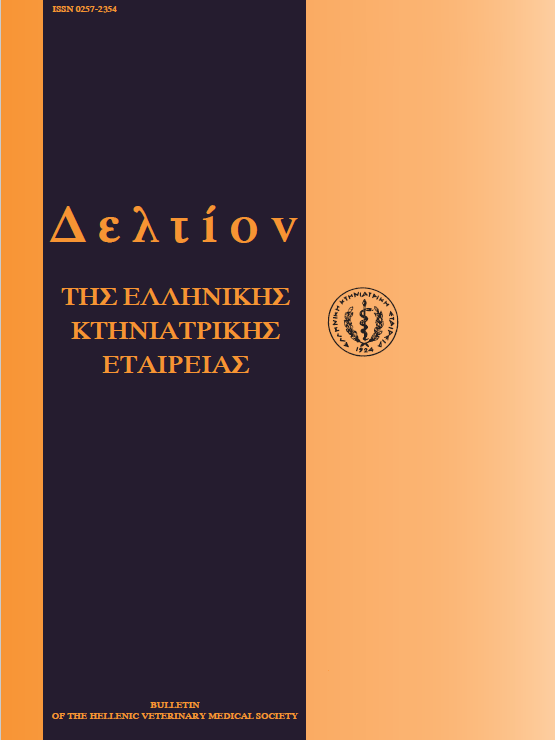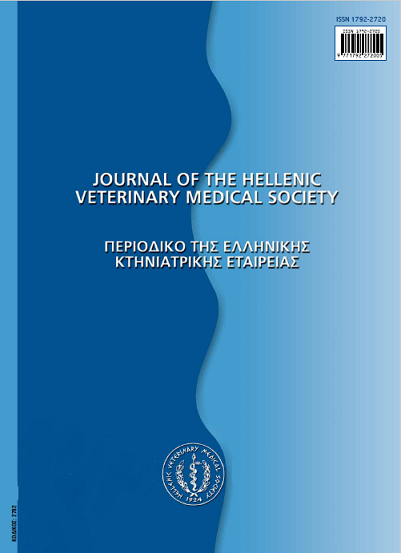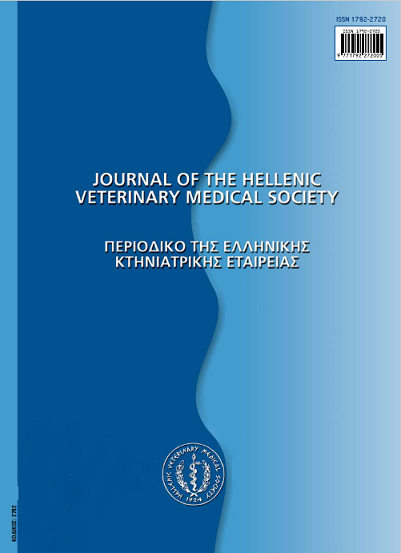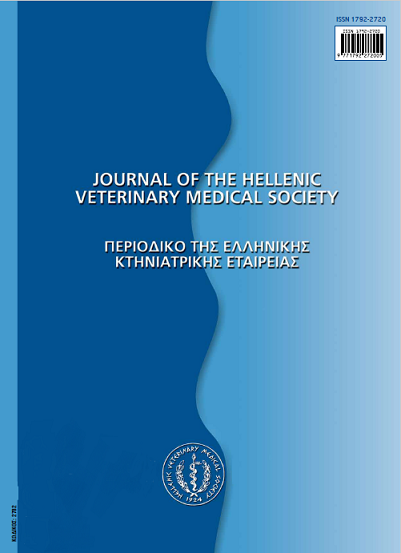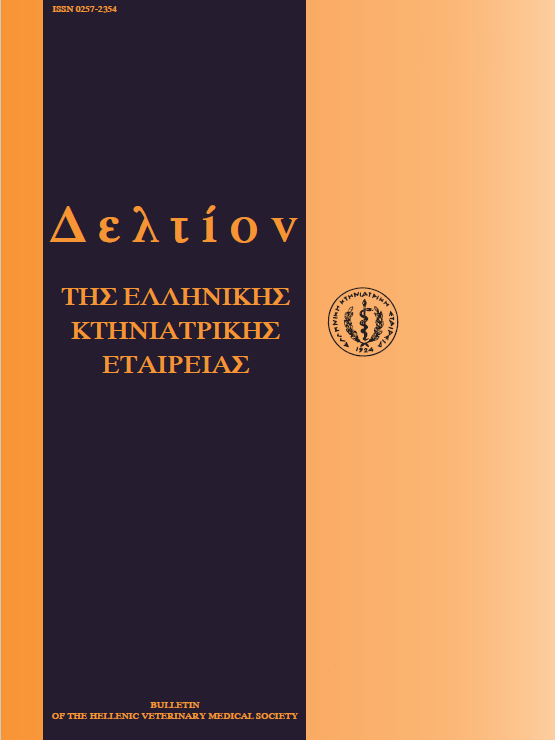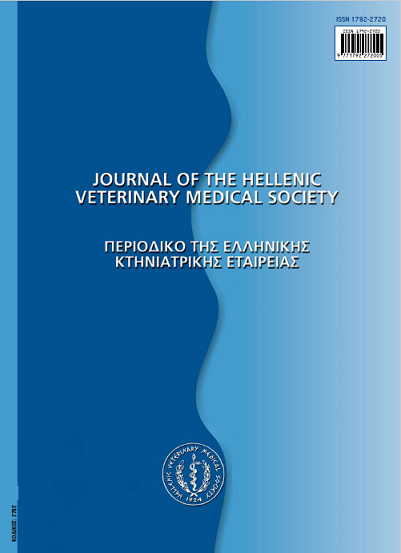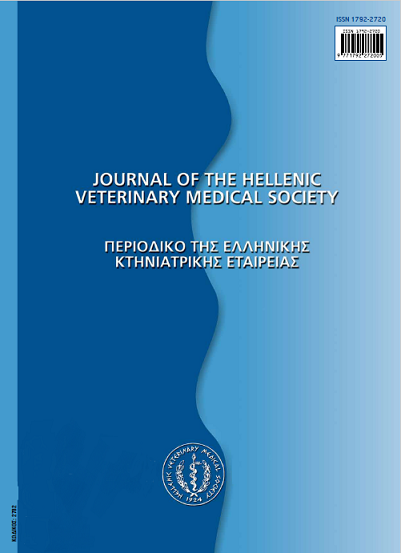Epizootiologic survey of selenium and vitamin E concentrations in cattle to be slaughtered in Thessaloniki
Abstract
The purpose of this survey was the study of selenium (Se) and vitamin E (vit. E) concentrations in cattle to be slaughtered in the area of Thessaloniki. For this purpose, research samples of blood and liver were collected from 205 cattle brought to different slaughter-houses of Thessaloniki. Out of the 205 cattle to be slaughtered, 78% presented deficient concentration of Se in liver (0,110-0,600 μg/g DM), 17% marginally deficient concentration(0,601-0,900 μg/g DM) and only 5% normal concentration (0,901-1,512 μg/g DM). Regarding vit. E, only 5% out of the 205 cattle to be slaughtered presented deficient concentration in liver (<5 μg/g WW). It is concluded from the above that, in Thessaloniki, a significant percentage of cattle run the risk of Se deficiency diseases. On the contrary, the case of vit. E deficiency, should be regarded as improbable for these animals.
Article Details
- How to Cite
-
CHRISTODOULOPOULOS (Γ. ΧΡΙΣΤΟΔΟΥΛΟΠΟΥΛΟΣ) G., ROUBIES (Ν. ΡΟΥΜΠΙΕΣ) N., KARATZIAS (Χ. ΚΑΡΑΤΖΙΑΣ) H., & PAPASTERIADIS (Α. ΠΑΠΑΣΤΕΡΙΑΔΗΣ) A. (2018). Epizootiologic survey of selenium and vitamin E concentrations in cattle to be slaughtered in Thessaloniki. Journal of the Hellenic Veterinary Medical Society, 51(4), 277–280. https://doi.org/10.12681/jhvms.15686
- Issue
- Vol. 51 No. 4 (2000)
- Section
- Research Articles

This work is licensed under a Creative Commons Attribution-NonCommercial 4.0 International License.
Authors who publish with this journal agree to the following terms:
· Authors retain copyright and grant the journal right of first publication with the work simultaneously licensed under a Creative Commons Attribution Non-Commercial License that allows others to share the work with an acknowledgement of the work's authorship and initial publication in this journal.
· Authors are able to enter into separate, additional contractual arrangements for the non-exclusive distribution of the journal's published version of the work (e.g. post it to an institutional repository or publish it in a book), with an acknowledgement of its initial publication in this journal.
· Authors are permitted and encouraged to post their work online (preferably in institutional repositories or on their website) prior to and during the submission process, as it can lead to productive exchanges, as well as earlier and greater citation of published work.

